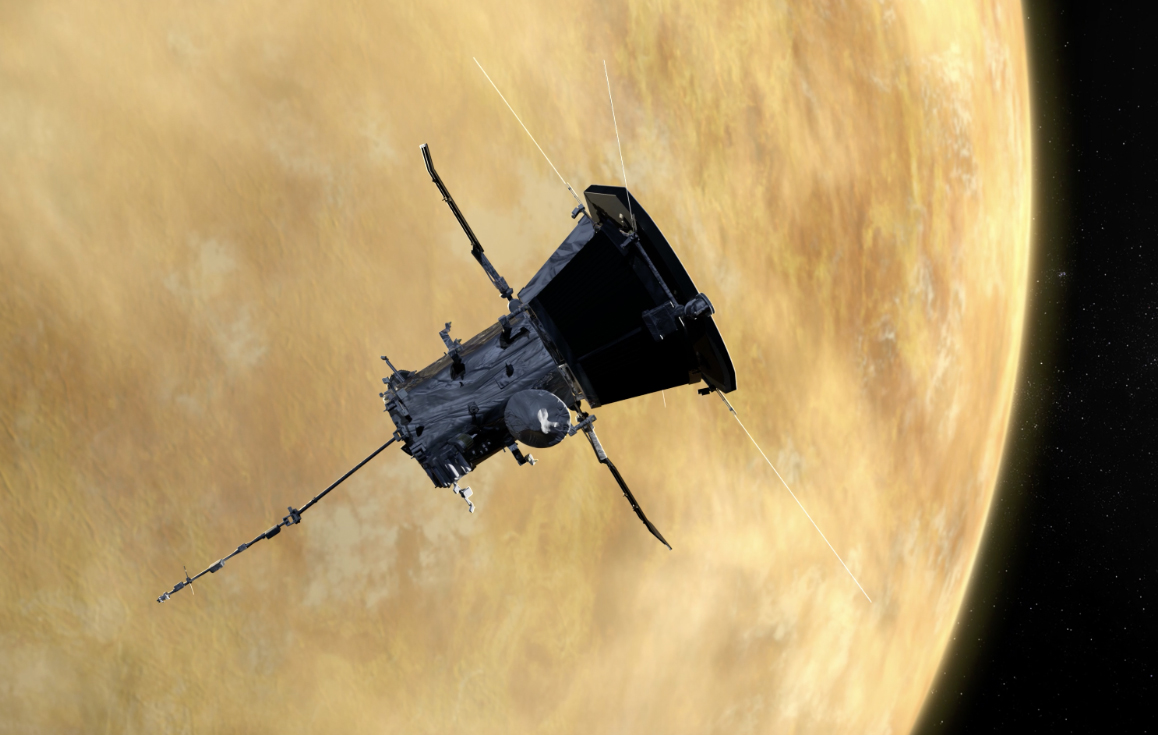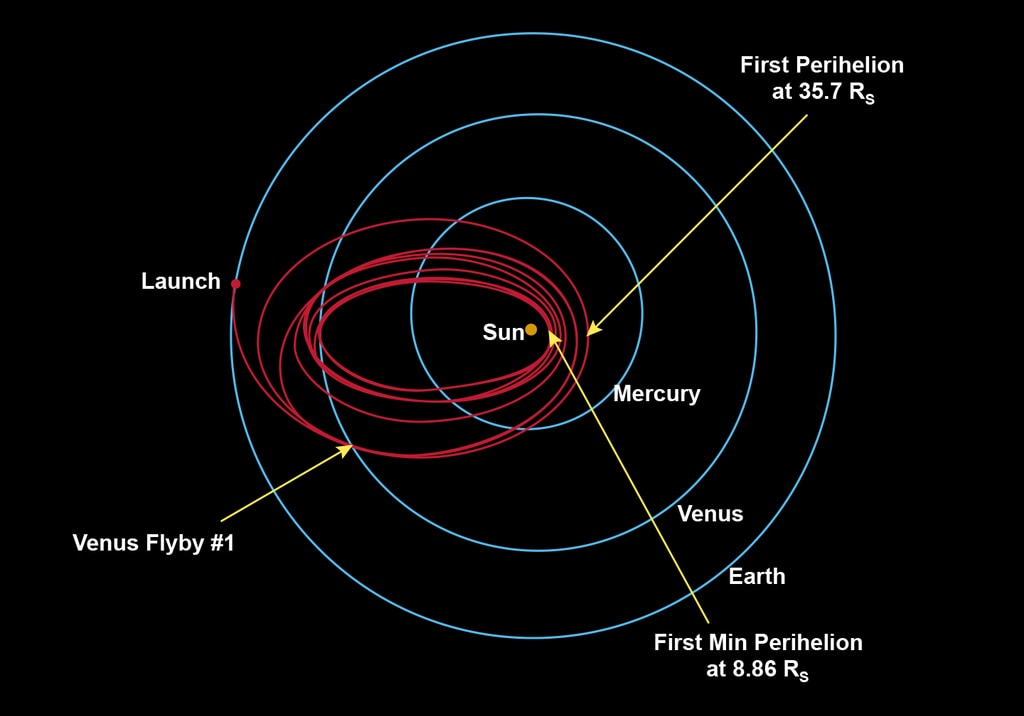NASA Solar Probe Flies By Venus on Its Way to 'Touch' the Sun
A NASA sun-studying spacecraft's first Venus flyby is in the books.
The agency's Parker Solar Probe zoomed within 1,500 miles (2,400 kilometers) of Venus as planned this morning (Oct. 3), getting an orbit-sculpting gravity assist, NASA officials said.
The spacecraft therefore remains on course for its first close encounter with the sun, which is scheduled to take place from Oct. 31 through Nov. 11. During this 12-day stretch, the Parker Solar Probe will gather a wealth of data about the sun's structure, composition and activity.

The spacecraft, which launched on Aug. 12, has many more such encounters on tap — a total of 24 over the next seven years. And there will be six more Venus flybys as well, which will serve to shrink the Parker Solar Probe's orbit, allowing it to get closer and closer to Earth's star over time.
During the final planned solar close approach in 2025, for example, the spacecraft will zoom within 3.83 million miles (6.16 million km) of the sun's surface. For perspective, the current proximity record —which Parker will break late this month, by the way — is 27 million miles (43 million km), set by the German-American Helios 2 mission in 1976.

When all is said and done, the data gathered by the mission should greatly improve scientists' understanding of the sun and space weather, NASA officials have said. For example, the Parker Solar Probe could help solve two long-standing solar puzzles — why the sun's outer atmosphere, or corona, is so much hotter than the surface; and how, exactly, the charged particles that make up the solar wind are accelerated to their impressive speeds.
Mike Wall's book about the search for alien life, "Out There," will be published on Nov. 13. Follow him on Twitter @michaeldwall and Google+. Follow us @Spacedotcom, Facebook or Google+. Originally published on Space.com.
Get the Space.com Newsletter
Breaking space news, the latest updates on rocket launches, skywatching events and more!
Join our Space Forums to keep talking space on the latest missions, night sky and more! And if you have a news tip, correction or comment, let us know at: community@space.com.

Michael Wall is a Senior Space Writer with Space.com and joined the team in 2010. He primarily covers exoplanets, spaceflight and military space, but has been known to dabble in the space art beat. His book about the search for alien life, "Out There," was published on Nov. 13, 2018. Before becoming a science writer, Michael worked as a herpetologist and wildlife biologist. He has a Ph.D. in evolutionary biology from the University of Sydney, Australia, a bachelor's degree from the University of Arizona, and a graduate certificate in science writing from the University of California, Santa Cruz. To find out what his latest project is, you can follow Michael on Twitter.









